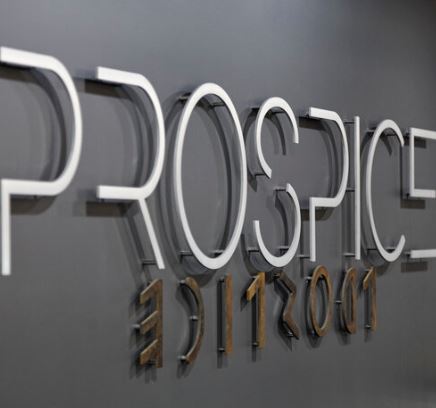Governor Inslee has released the final Phase 2 social distancing requirements for restaurants, taverns, wineries, breweries, and other food/beverage industries. You can view the guidelines here, or we have listed them below.
These guidelines are part of the Governor’s Safe Start plan, which is a phased in approach to reopening Washington’s economy. While the Stay at Home order has been extended through the end of May, Safe Start outlines a plan for reopening in four phases. Phase 1 began last week, and wineries that are able to adhere to social distancing requirements will be included in Phase 2.
State leaders and health experts will be closely monitoring specific data and metrics to determine when we can safely move from Phase 1 to Phase 2 and so on. Please note that until your county moves into Phase 2, you must still adhere to the current restrictions. Several counties have moved into Phase 2 already, including Ferry, Stevens, Pond Oreille, Lincoln, Garfield, Columbia, Skamania, and Wahkiakum.
Once your county moves into Phase 2, here are the restrictions that wineries must follow:
Phase 2 Reopening COVID-19 Requirements
Every business must adopt a written procedure for dine-in service that is at least as strict as the Phase 2 procedure below. The businesses must ensure strict adherence to all measures established by the State of Washington, L&I, DOL and the DOH.
Dine-In Service, applies to Tasting Rooms:
- Hand sanitizer should be available at entry for all staff and patrons (assuming supply availability).
- No bar seating is permitted during Phase 2. If an establishment has bar seating it must be closed off to prohibit use.
- If the establishment does not offer table service, they must have protocols in place to ensure adequate social distancing at food and drink pick-up stations, and seating within their dining area.
- All parties and tables must be 5 guests or less.
- Guest occupancy must be 50% of maximum building occupancy or lower as determined by the fire code.
- Outdoor seating is permitted but must also be at 50% capacity. Outdoor seating does not count toward the building occupancy limit, but it must follow all other reopening requirements.
- Tables must be placed far enough apart when measured from occupied chair to occupied chair, to ensure dine-in guests seated at a table are a minimum of 6 feet away from guests at adjacent table, or there must be a physical barrier or wall separating booths or tables.
- It is strongly suggested customers wear a cloth face covering anytime they are not seated at the table (while being seated or leaving, or while going to the restroom). Please note that King County has issued a directive for citizens to wear face masks in public.
- Buffets and salad bars are not permitted at this time but may be addressed through subsequent interpretive guidance.
- If the establishment offers table service, create a daily log of all customers and maintain that daily log for 30 days, including telephone/email contact information, and time in. This will facilitate any contact tracing that might need to occur.
- All menus must be single-use.
- Any condiments typically left on the table must be single-use or sanitized after each use.
- Businesses must have implemented a plan to ensure proper physical distancing in lobby/waiting areas/payment counters.
- Minimize the number of staff serving any given table. It is strongly recommended that one staff person take a table’s order, bring all of their beverages/food/utensils, take their payment, etc.
Employee Safety and Health:
- Educate workers in the language they understand best about coronavirus and how to prevent transmission and the employer’s COVID-19 policies.
- Maintain minimum six-foot separation between all employees (and customers) in all interactions at all times. When strict physical distancing is not feasible for a specific task, other prevention measures are required, such as use of barriers, minimize staff or customers in narrow or enclosed areas, stagger breaks, and work shift starts.
- Provide personal protective equipment (PPE) such as gloves, goggles, face shields and face masks as appropriate or required to employees for the activity being performed. Cloth facial coverings must be worn by every employee not working alone on the job site unless their exposure dictates a higher level of protection under Department of Labor & Industries safety and health rules and guidance. Refer to Coronavirus Facial Covering and Mask Requirements for additional details. A cloth facial covering is described in the Department of Health guidance.
- Ensure frequent and adequate hand washing with adequate maintenance of supplies. Use disposable gloves where safe and applicable to prevent transmission on tools or other items that are shared.
- Establish a housekeeping schedule that includes frequent cleaning and sanitizing with a particular emphasis on commonly touched surfaces.
- Screen employees for signs/symptoms of COVID-19 at start of shift. Make sure sick employees stay home or immediately go home if they feel or appear sick. Cordon off any areas where an employee with probable or confirmed COVID-19 illness worked, touched surfaces, etc. until the area and equipment is cleaned and sanitized. Follow the cleaning guidelines set by the CDC to deep clean and sanitize.
We want to emphasize that no winery or other listed industry partially opening in Phase 2 may do so if they cannot adhere to the above requirements. The Governor’s office also states that no reopening inspections are required prior to a winery reopening provided they meet and maintain all requirements.
We are working with our partners and the WSU Department of Hospitality to put together a list of best practices for reopening tasting rooms. In the meantime, please refer to the “Tasting Rooms Should” portion of the California Wine Institute’s Tasting Room Reopening Protocols. This had been thoroughly vetted and will help to inform the protocols in Washington.
In Phase 3, on-premise activities may resume at 75% capacity and bar areas may open at 25% capacity. We will be working to provide additional context for these capacity limitations and what that will look like for wineries.
Curbside & Delivery Rules:
We understand that many consumers will want to continue to limit contact for some time and these services will be an important part of your operations, even as on-premise activities start to resume. We are working with the LCB in efforts to extend all temporary curbside and delivery allowances currently available to liquor licensees. We anticipate these sales allowances will continue to be allowed and be an important part of a winery’s overall business model as our state slowly transitions through our phased reopening.
This is an unprecedented time and we understand there are a lot of questions. Our goal is to streamline the collection of questions and capture them all in one place so that we can share your questions with the appropriate authorities and create a helpful FAQ for all wineries to utilize. We have created this simple form for you to submit your questions through, but always feel free to email us directly as well.
There are many pieces to come together in the coming weeks. We are here for you. Know that we are advocating for your winery and will continue to provide updates and information to support you as you prepare for reopening of on-premise activities.
Stay Safe
 Member Login
Member Login


